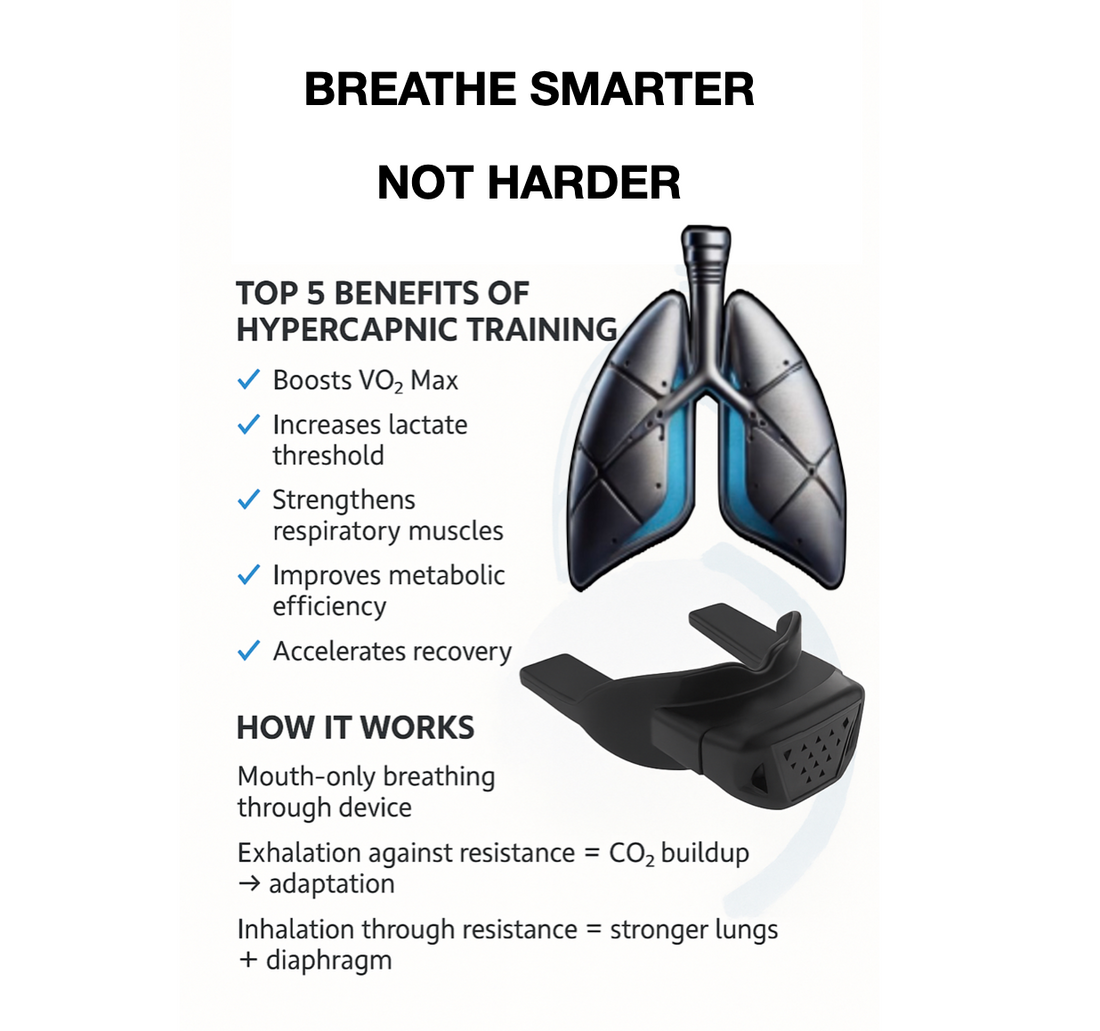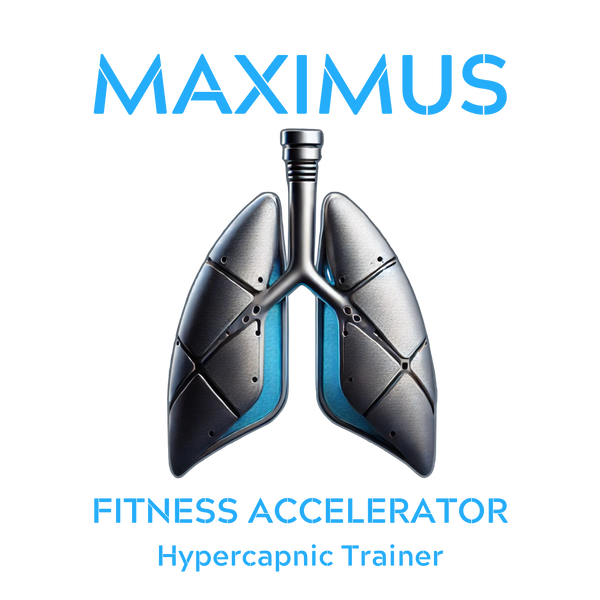
ANXIETY CALMING WITH MAXIMUS
Share
Breathe Through It: How Hypercapnic Training Can Be a Breakthrough for Anxiety Relief & Mental Toughness
“If you can control your breath, you can control your mind.”
Ancient Yogic Principle, now backed by modern science.
The Anxious Mind & The Breath: A Double-Edged Sword
When anxiety strikes, your breathing is often the first thing to go. Shallow, rapid breaths signal the brain that you’re in danger, triggering a feedback loop of stress hormones, tight muscles, and scattered thoughts. That’s why experts often say: “Breathe deeply. Breathe with your diaphragm.”
But here’s the twist: what if you could train your body to automatically breathe more calmly under stress, even before anxiety ramps up?
Enter hypercapnic training devices like Maximus, a cutting-edge respiratory resistance platform that goes beyond typical “deep breathing” advice and rewires your CO₂ tolerance, breathing mechanics, and mental resilience—from the inside out.
What is Hypercapnic Training?
Hypercapnia means elevated levels of carbon dioxide (CO₂) in the blood. Normally, your brain responds to rising CO₂ with panic signals—urge to breathe, anxiety, increased heart rate.
But with controlled hypercapnic training, like with Maximus:
• You intentionally expose yourself to mild, safe elevations of CO₂
• This improves your tolerance to that sensation
• Your body recalibrates its “panic” threshold. This is neuroplasticity for your respiratory system, and by extension, your anxiety response.
It Helps With Anxiety: The Science
1. CO₂ Tolerance & Panic Desensitization
People with panic disorder or high anxiety often have low CO₂ tolerance. Studies show they overreact to even slight elevations of CO₂ (hypercapnic sensitivity). This is one reason they feel short of breath, dizzy, or panicked when stressed.
Hypercapnic training retrains this reflex.
HowSupporting Research:
Sherman et al. (2025) showed that even short-term breathwork under mild CO₂ load improved autonomic control and stress resilience.
🔗 Read Full Paper
2. Better Diaphragmatic Control = Less Anxiety
Devices like Maximus force you to breathe against resistance, which:
• Recruits the diaphragm and deep stabilizer muscles
• Prevents “chest-only” breathing
• Triggers the parasympathetic nervous system (rest & digest)
The result? You build the habit of calm, slow breathing even when you’re not thinking about it — crucial for anxiety recovery.
3. Nervous System Rewiring
Hypercapnic breath training acts as exposure therapy for your autonomic nervous system:
• Teaches your brain that rising CO₂ is not a threat
• Reduces overactive amygdala firing (emotional fear center)
• Increases prefrontal cortex regulation (rational control)
You’re literally training your body not to freak out, one breath at a time.
What Happens During Maximus Workouts?
When you use Maximus during cardio or strength training:
• You experience elevated CO₂ due to the restricted airflow (dead space + resistance)
• Muscles start to burn lactate, which would normally spike breathing rate
• Your mind wants to panic and quit — but through progressive adaptation, it learns to stay calm
Over time, this process dramatically improves:
|
Metric |
Psychological Effect |
|---|---|
|
🫁 CO₂ tolerance |
Less anxiety, calmer under stress |
|
🧠 Interoception |
Better awareness of internal states |
|
📉 Perceived Exertion (RPE) |
Work feels easier at same intensity |
|
🛡️ Mental toughness |
Trained resistance to panic & fatigue |
Mental Toughness: Why Athletes & CEOs Are Using This
Ever wonder why elite athletes, military operators, and high performers train with breath restriction?
Because breath is the interface between the body and the mind.
By conditioning yourself to remain calm under chemical stress, you:
• Extend your endurance
• Sharpen focus under fatigue
• Build grit — not just the buzzword, but real neurophysiological toughness
“The stronger your CO₂ buffer, the stronger your emotional buffer.”
Bonus: Sleep, Focus & Nervous System Reset
Hypercapnic training has been shown to:
• Reduce heart rate variability (HRV) volatility
• Improve sleep onset and depth
• Reset dysregulated breathing patterns from long-term anxiety or trauma
It’s not just about performance — it’s about restoring your baseline.
How to Use Maximus for Anxiety - Here’s a beginner-friendly routine:
|
Time |
Protocol |
|---|---|
|
5 min |
Nasal-only breathing with Maximus on lowest resistance |
|
5 min |
Box breathing (4 in – 4 hold – 4 out – 4 hold) with device |
|
5 min |
Easy walk or mobility work with Maximus on (diaphragmatic only) |
Repeat 3–5x per week. Combine with mindfulness or cold exposure for a complete stress resilience protocol.
Final Thoughts
Hypercapnic training is no longer just for athletes. It’s a mental health tool, a biological recalibrator, and a daily resilience ritual.
If you’ve struggled with anxiety, burnout, or just want more grit in your day-to-day life, breathing with a device like Maximus could be your next best ally.
Because sometimes, the way out of anxiety… is through the breath.
Ready to try it? Explore Maximus
